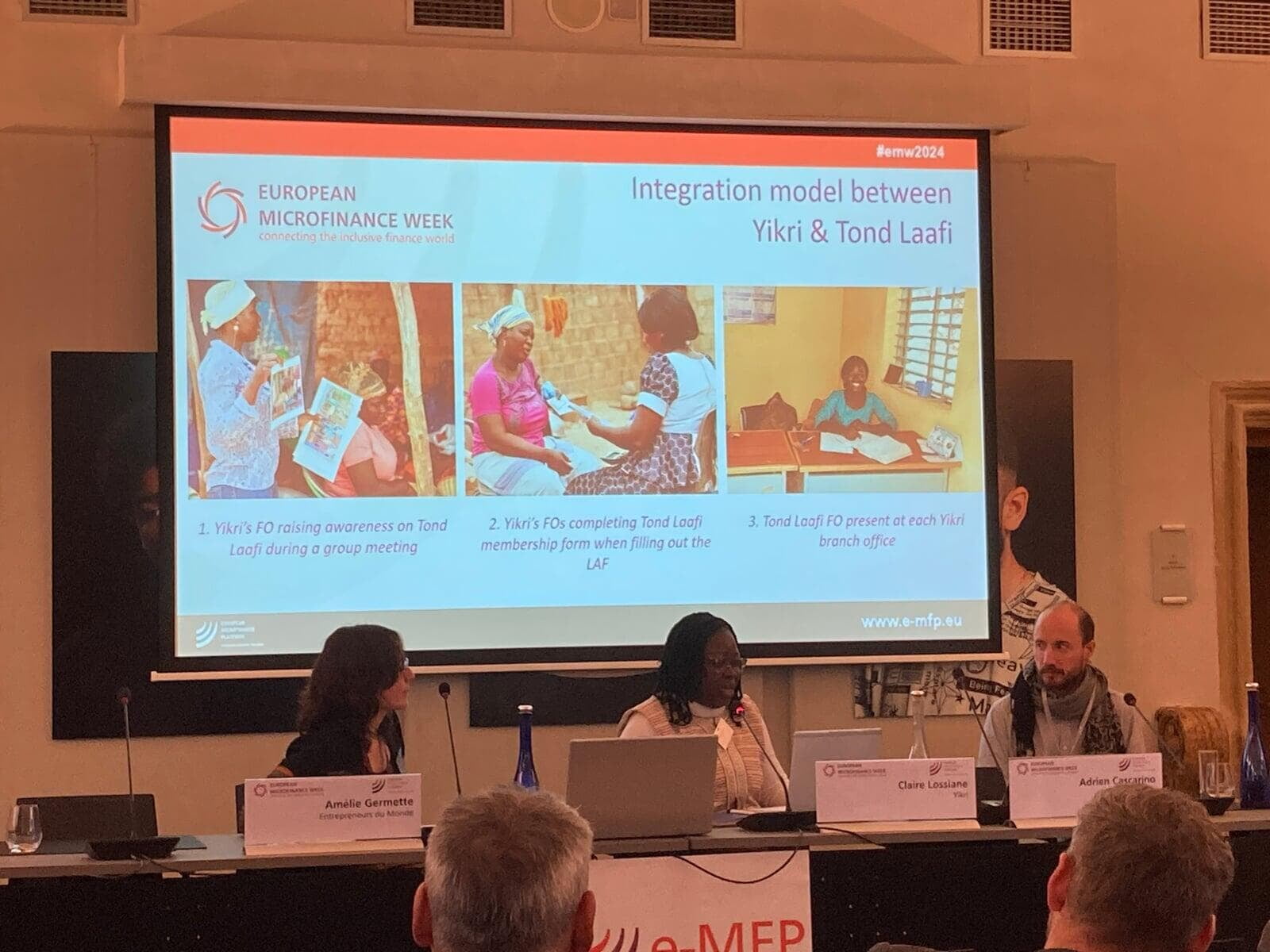
The microfinance institution Yikri has partnered with its affiliated insurer Tond Laafi to provide health insurance to its borrowers and their families in Burkina Faso. When women borrow from Yikri, the insurance policy is included with the cost of loan, and the borrower becomes an owner of the insurance scheme. Tond Laafi maintains a field officer in each branch of Yikri, and this person travels to meetings of Yikri’s borrowers to educate them on health issues. Meanwhile, Yikri field officers collect insurance premiums at the same time as they collect loan repayments. Originally, the premium payment was the same for all borrowers, but now it is scaled to the size of the loan, with the fee waived for those borrowing the smallest amounts. The monthly fee starts below EUR 1 and ranges up to several euros. The average monthly income of these customers is about EUR 60.
The consulting firm Atia supports Yikri and Tond Laafi in offering the insurance, and it also partners with the Togolese microfinance institution Assilassimé. In selling a similar product, Assilassimé has found that people often are wary of paying for insurance when they are not sick - and given that they earn only about EUR 100 per month. However, potential participants are often convinced when they learn more about the insurance and hear from a current member of the mutual. People are attracted to the idea that their premiums pay to take care of their ill neighbors when they themselves are not in need of health care. Another motivation for women to buy insurance is that most women in a recent survey reported needing permission from their spouse to pay for their own health care services - permission that is not always granted.
Within these mutuals in Burkina Faso and Togo, 40,000 members pay an average of EUR 25 per year for health insurance, with 80% to 90% of those premiums paid out to health care providers. When mutual members access care, they pay 40% of the cost, and the third-party insurer pays the remainder. It is important to be sure that this third-party payment is prompt because delays have caused health care providers to decline the insurance in the past. Another key to success is engaging medical staff is reviewing claims. This saves money by reducing fraud and maximizing the use of generic medication rather than specialty drugs. Also to support financial sustainability, it is important to maximize customer retention. One way to do this is by establishing a timely and effective system for handling complaints.
* * *
In India, Opportunity International has been working to improve the health of poor people in urban areas through a three-year pilot program. The NGO launched an insurance product at an annual cost of USD 8 per household. In response to client demand, it then added a health savings product with a fixed periodic deposit amount. Participants are also keen on access to emergency health care loans because the rate to take such a loan from a payday lender is 20% to 30% per month.
In the first year: (1) the insurance mutual has enrolled 800 people, of whom a quarter are people with disabilities; (2) 54 people have opened health savings accounts; and (3) 300 people - 72% of them women - have taken out medical loans. One challenge is that 90% of those applying for medical loans have been rejected, largely due to over-indebtedness. Applicants have an average of over four outstanding loans, and some have over 20. For recruiting, the best strategies has been pop-up stands staffed by medical personnel and soliciting people who have experienced a recent, expensive medical event.
* * *
Atia recently conducted a randomized controlled trial on its mutual insurance model, whereby half of 2,000 subjects were enrolled in mutual health insurance. The results included that mutual members sought care for medical issues much more quickly and were more likely to buy all - not just some - of the medications they were prescribed. Another finding is that usage of the service was proportionally lower among men relative to women. This can be attributed to three main reasons: (1) when receiving care, many did not realize or remember that they were eligible for insurance coverage; (2) men saw themselves as too strong too need medical help; and (3) men did not want to appear reliant on an insurance benefit by their wives.
Additional data collection addressed the question of making insurance optional rather than bundling it with loans. When Atia offered insurance as an option, payouts were 50% to 100% higher than when it was required. This is due to those who actively opt in to insurance being more likely to need care, use care and remember that they have insurance when visiting the point of care.
Additional data collection addressed the question of making insurance optional rather than bundling it with loans. When Atia offered insurance as an option, payouts were 50% to 100% higher than when it was required. This is due to those who actively opt in to insurance being more likely to need care, use care and remember that they have insurance when visiting the point of care.
This content was delivered by presenters representing the above organizations at European Microfinance Week 2024, which is hosted by the European Microfinance Platform. The e-MFP has about 120 members, each of which supports the provision of financial services in lower income countries.

